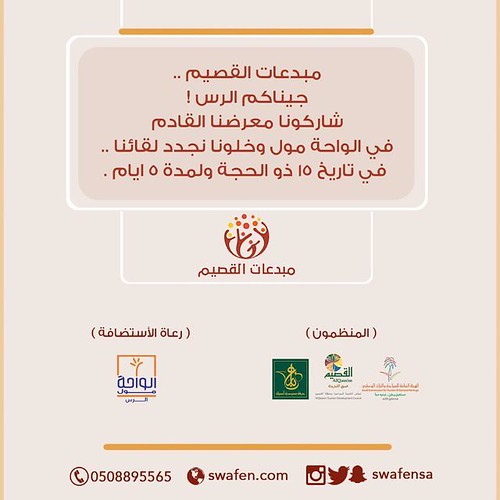Oblems with immortalized lines. The T antigen expression is functionally evident at the lowered temperature of 33 C and enhanced in the presence of interferon-c. Frequently, incubation at 37 C in the absence of interferon-c benefits in loss of significant T antigen by 48 h. We showed effective isolation and culture of ChEC from TSP1+/+ and TSP12/2 mice. FACScan analysis showed nearly all the isolated cells express PECAM-1, VE-cadherin and B4-lectin.These cells have been readily passaged and propagated in culture for as much as six months devoid of important loss in expression of EC markers. Even so, these cells showed undetectable levels of PV-1 and HARA, markers of fenestrated 20 / 28 TSP1 and Choroidal Endothelial Cells Fig. 9. The re-expression of TSP1 in TSP12/2 ChEC. A: TSP12/2 cells had been infected with viruses encoding TSP1 as detailed in Approaches. The expression of TSP1 was confirmed by Western blot analysis. B: The capillary morphogenesis of TSP12/2 ChEC expressing TSP1 in Matrigel. Please note the restored capillary morphogenesis of TSP12/2 ChEC soon after re-expression of TSP1. C: The quantitative assessment of capillary morphogenesis. Please note a substantial enhance inside the capillary morphogenesis of TSP12/2l ChEC expressing TSP1. D: Restoration of migration in TSP12/2 ChEC cells expression TSP1, determined by transwell migration assay. doi:ten.1371/journal.pone.0116423.g009 EC. These observations are constant with very restricted degree of fenestration detected in these cells by electron microscopy examination. To our understanding, that is the initial Chlorphenoxamine biological activity report of isolation and culture of ChEC from wild variety and transgenic mice. The ability PubMed ID:http://jpet.aspetjournals.org/content/12/4/255 to culture ChEC from TSP12/2 mice permitted us to delineate the cell autonomous effects of TSP1 deficiency on angioinflammatory phenotype of those cells. Our laboratory was also initially to report the successful culture of retinal EC from wild form and transgenic mice working with a equivalent technique. Our preceding outcomes showed that the wild sort and TSP12/2 retinal EC also exhibit related morphology as we demonstrated here for ChEC. On the other hand, the influence of 21 / 28 TSP1 and Choroidal Endothelial Cells Fig. ten. Alterations in expression and activation of NOS in ChEC. A: The level phosphorylated-eNOS and total eNOS, iNOS, and nNOS in cell lysates were analyzed by Western MedChemExpress E-7080 blotting. The b-actin was made use of for loading handle. Please note a considerable increase inside the degree of p-eNOS and iNOS in TSP12/2 ChEC compared with TSP1+/+ cells. This was confirmed by measuring band intensities relative to b-actin, and we didn’t detect nNOS in both cell varieties. B: intracellular nitric oxide level in ChEC was measured making use of  4-amino-5- methylamino-2,7-difluorofluorescein as described in Approaches. Please note a considerable raise in intracellular NO level in TSP12/2 ChEC compared with TSP1+/+ cells. C: secreted level of VEGF in
4-amino-5- methylamino-2,7-difluorofluorescein as described in Approaches. Please note a considerable raise in intracellular NO level in TSP12/2 ChEC compared with TSP1+/+ cells. C: secreted level of VEGF in  ChEC was determined making use of an ELISA immunoassay as described in Approaches. Please note the equivalent degree of VEGF secretion in ChEC. These experiments were repeated with two distinct isolations of cells with related results. doi:ten.1371/journal.pone.0116423.g010 TSP1-deficiency on retinal EC phenotype was substantially various from these reported here for ChEC. Retinal EC prepared from TSP12/2 mice were more migratory, though TSP12/2 ChEC have been significantly less migratory. Furthermore, lack of TSP1 minimally impacted retinal neovascularization for the duration of oxygen-induced ischemic retinopathy, though significant enhancement of neovascularization wa.Oblems with immortalized lines. The T antigen expression is functionally evident in the reduced temperature of 33 C and enhanced within the presence of interferon-c. Typically, incubation at 37 C within the absence of interferon-c results in loss of significant T antigen by 48 h. We showed profitable isolation and culture of ChEC from TSP1+/+ and TSP12/2 mice. FACScan evaluation showed nearly all the isolated cells express PECAM-1, VE-cadherin and B4-lectin.These cells had been readily passaged and propagated in culture for as much as six months with no significant loss in expression of EC markers. Nonetheless, these cells showed undetectable levels of PV-1 and HARA, markers of fenestrated 20 / 28 TSP1 and Choroidal Endothelial Cells Fig. 9. The re-expression of TSP1 in TSP12/2 ChEC. A: TSP12/2 cells had been infected with viruses encoding TSP1 as detailed in Strategies. The expression of TSP1 was confirmed by Western blot analysis. B: The capillary morphogenesis of TSP12/2 ChEC expressing TSP1 in Matrigel. Please note the restored capillary morphogenesis of TSP12/2 ChEC just after re-expression of TSP1. C: The quantitative assessment of capillary morphogenesis. Please note a significant increase inside the capillary morphogenesis of TSP12/2l ChEC expressing TSP1. D: Restoration of migration in TSP12/2 ChEC cells expression TSP1, determined by transwell migration assay. doi:10.1371/journal.pone.0116423.g009 EC. These observations are consistent with extremely limited degree of fenestration detected in these cells by electron microscopy examination. To our information, this really is the initial report of isolation and culture of ChEC from wild type and transgenic mice. The capability to culture ChEC from TSP12/2 mice permitted us to delineate the cell autonomous effects of TSP1 deficiency on angioinflammatory phenotype of these cells. Our laboratory was also initial to report the prosperous culture of retinal EC from wild kind and transgenic mice utilizing a equivalent method. Our previous outcomes showed that the wild form and TSP12/2 retinal EC also exhibit related morphology as we demonstrated here for ChEC. Even so, the effect of 21 / 28 TSP1 and Choroidal Endothelial Cells Fig. 10. Alterations in expression and activation of NOS in ChEC. A: The level phosphorylated-eNOS and total eNOS, iNOS, and nNOS in cell lysates have been analyzed by Western blotting. The b-actin was employed for loading handle. Please note a significant enhance in the degree of p-eNOS and iNOS in TSP12/2 ChEC compared with TSP1+/+ cells. This was confirmed by measuring band intensities relative to b-actin, and we did not detect nNOS in each cell kinds. B: intracellular nitric oxide level in ChEC was measured working with 4-amino-5- methylamino-2,7-difluorofluorescein as described in Strategies. Please note a considerable enhance in intracellular NO level in TSP12/2 ChEC compared with TSP1+/+ cells. C: secreted amount of VEGF in ChEC was determined applying an ELISA immunoassay as described in Techniques. Please note the equivalent amount of VEGF secretion in ChEC. These experiments have been repeated with two distinctive isolations of cells with comparable outcomes. doi:ten.1371/journal.pone.0116423.g010 TSP1-deficiency on retinal EC phenotype was drastically distinct from these reported right here for ChEC. Retinal EC prepared from TSP12/2 mice have been far more migratory, although TSP12/2 ChEC had been much less migratory. Furthermore, lack of TSP1 minimally affected retinal neovascularization throughout oxygen-induced ischemic retinopathy, even though important enhancement of neovascularization wa.
ChEC was determined making use of an ELISA immunoassay as described in Approaches. Please note the equivalent degree of VEGF secretion in ChEC. These experiments were repeated with two distinct isolations of cells with related results. doi:ten.1371/journal.pone.0116423.g010 TSP1-deficiency on retinal EC phenotype was substantially various from these reported here for ChEC. Retinal EC prepared from TSP12/2 mice were more migratory, though TSP12/2 ChEC have been significantly less migratory. Furthermore, lack of TSP1 minimally impacted retinal neovascularization for the duration of oxygen-induced ischemic retinopathy, though significant enhancement of neovascularization wa.Oblems with immortalized lines. The T antigen expression is functionally evident in the reduced temperature of 33 C and enhanced within the presence of interferon-c. Typically, incubation at 37 C within the absence of interferon-c results in loss of significant T antigen by 48 h. We showed profitable isolation and culture of ChEC from TSP1+/+ and TSP12/2 mice. FACScan evaluation showed nearly all the isolated cells express PECAM-1, VE-cadherin and B4-lectin.These cells had been readily passaged and propagated in culture for as much as six months with no significant loss in expression of EC markers. Nonetheless, these cells showed undetectable levels of PV-1 and HARA, markers of fenestrated 20 / 28 TSP1 and Choroidal Endothelial Cells Fig. 9. The re-expression of TSP1 in TSP12/2 ChEC. A: TSP12/2 cells had been infected with viruses encoding TSP1 as detailed in Strategies. The expression of TSP1 was confirmed by Western blot analysis. B: The capillary morphogenesis of TSP12/2 ChEC expressing TSP1 in Matrigel. Please note the restored capillary morphogenesis of TSP12/2 ChEC just after re-expression of TSP1. C: The quantitative assessment of capillary morphogenesis. Please note a significant increase inside the capillary morphogenesis of TSP12/2l ChEC expressing TSP1. D: Restoration of migration in TSP12/2 ChEC cells expression TSP1, determined by transwell migration assay. doi:10.1371/journal.pone.0116423.g009 EC. These observations are consistent with extremely limited degree of fenestration detected in these cells by electron microscopy examination. To our information, this really is the initial report of isolation and culture of ChEC from wild type and transgenic mice. The capability to culture ChEC from TSP12/2 mice permitted us to delineate the cell autonomous effects of TSP1 deficiency on angioinflammatory phenotype of these cells. Our laboratory was also initial to report the prosperous culture of retinal EC from wild kind and transgenic mice utilizing a equivalent method. Our previous outcomes showed that the wild form and TSP12/2 retinal EC also exhibit related morphology as we demonstrated here for ChEC. Even so, the effect of 21 / 28 TSP1 and Choroidal Endothelial Cells Fig. 10. Alterations in expression and activation of NOS in ChEC. A: The level phosphorylated-eNOS and total eNOS, iNOS, and nNOS in cell lysates have been analyzed by Western blotting. The b-actin was employed for loading handle. Please note a significant enhance in the degree of p-eNOS and iNOS in TSP12/2 ChEC compared with TSP1+/+ cells. This was confirmed by measuring band intensities relative to b-actin, and we did not detect nNOS in each cell kinds. B: intracellular nitric oxide level in ChEC was measured working with 4-amino-5- methylamino-2,7-difluorofluorescein as described in Strategies. Please note a considerable enhance in intracellular NO level in TSP12/2 ChEC compared with TSP1+/+ cells. C: secreted amount of VEGF in ChEC was determined applying an ELISA immunoassay as described in Techniques. Please note the equivalent amount of VEGF secretion in ChEC. These experiments have been repeated with two distinctive isolations of cells with comparable outcomes. doi:ten.1371/journal.pone.0116423.g010 TSP1-deficiency on retinal EC phenotype was drastically distinct from these reported right here for ChEC. Retinal EC prepared from TSP12/2 mice have been far more migratory, although TSP12/2 ChEC had been much less migratory. Furthermore, lack of TSP1 minimally affected retinal neovascularization throughout oxygen-induced ischemic retinopathy, even though important enhancement of neovascularization wa.